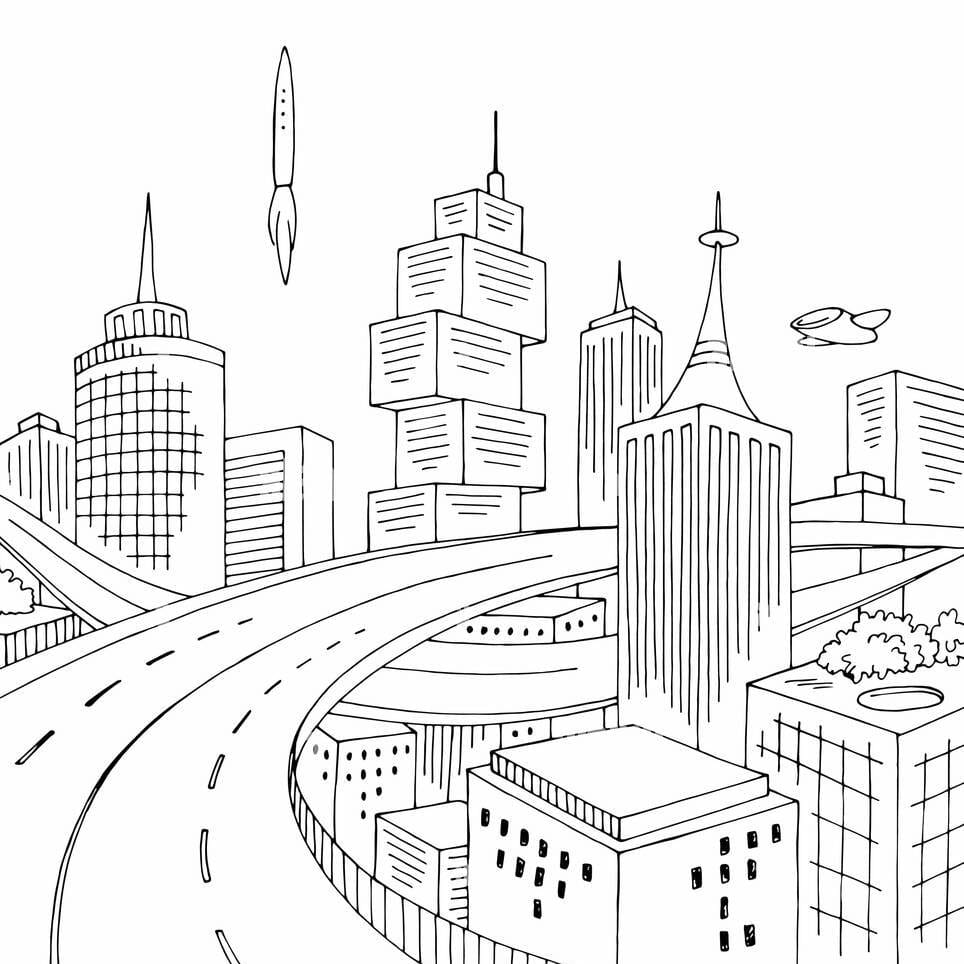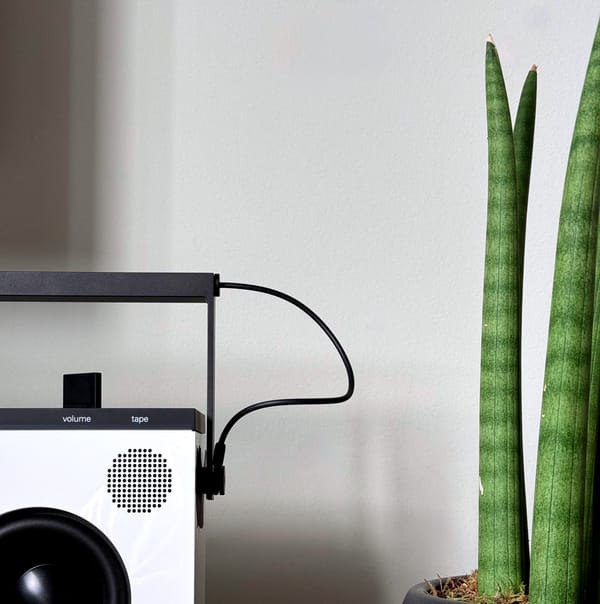Fu⍀ure

Seamless high performance access to information opens up a plethora of opportunity for developing new, never seen before applications⏤ imagine:
- walking into a store and using augmented reality to watch a live demonstration of the product you are pointing to in action;
- self-driving cars on a freeway, interacting with each other in real-time to ensure complete safety and coordinated traffic flow;
- a surgeon performing a delicate operation, using virtual reality while he is in a different country, other than the patient.
A lot of people don't realize autonomous vehicles are basically going to be a smartphone that we live in for hours every day. We're literally inside of it. It's an app we can't escape. When we get into that smartphone and it starts rolling, we're sending it the highest and most powerful signal of intent that any human can. It's much more powerful than going on a website when you're browsing. That's what anybody building a recommendation system wants. They want a signal of intent. When you say, 'I'm getting into a car now and I'm going in this direction and at this time of day, that's a huge signal of intent.
There's a possibility here to make much better recommendations and surface alternatives for people in their lives. At the same time, because it's a smartphone we live inside, the sensors will be able to collect much more data about us. There could be webcams trained on our faces. Microphones trained on our voices. Rather than just clicking on a website, we're giving the signal of intent with our direction and we're also showing it our whole analog expression, Is your face angry or content? What is your voice saying? Who else is in the car? We're actually digitizing much more of reality and by doing so, we'll be able to read more subtle signals which gets into the collection of behavioral data. The cars are going to be data gathering mechanisms par excellence.
Un acceso sin fisuras y de alto rendimiento a la información abre un sinfín de oportunidades para desarrollar aplicaciones nuevas, nunca antes vistas⏤ imagina:
- entrar en una tienda y utilizar la realidad aumentada para presenciar una demostración en vivo del producto al que estás señalando en acción;
- visualiza autos autónomos en una autopista interactuando entre sí en tiempo real para garantizar una seguridad completa y un flujo de tráfico coordinado;
- un cirujano llevando a cabo una operación delicada utilizando la realidad virtual, estando en un país diferente al del paciente.
Mucha gente no se da cuenta de que los vehículos autónomos básicamente serán como un teléfono inteligente en el que vivimos durante horas todos los días. Literalmente, estamos dentro de él. Es una aplicación de la cual no podemos escapar. Cuando entramos en ese teléfono inteligente y comienza a moverse, estamos enviándole la señal de intención más alta y poderosa que cualquier humano puede enviar. Es mucho más poderoso que visitar un sitio web mientras estás navegando. Eso es lo que cualquier persona que construye un sistema de recomendación desea. Quieren una señal de intención. Cuando dices: "Ahora estoy subiendo a un auto y me dirijo en esta dirección y a esta hora del día", eso es una señal de intención enorme.
Hay una posibilidad aquí de hacer recomendaciones mucho mejores y presentar alternativas para las personas en sus vidas. Al mismo tiempo, debido a que es un teléfono inteligente en el que vivimos, los sensores podrán recopilar mucha más información sobre nosotros. Podría haber cámaras web enfocadas en nuestros rostros. Micrófonos enfocados en nuestras voces. En lugar de simplemente hacer clic en un sitio web, estamos dando la señal de intención con nuestra dirección y también le estamos mostrando nuestra expresión analógica completa. ¿Está tu rostro enojado o contento? ¿Qué está diciendo tu voz? ¿Quién más está en el auto? Estamos digitalizando mucho más de la realidad y, al hacerlo, podremos interpretar señales más sutiles, lo que se traduce en la recopilación de datos de comportamiento. Los autos serán mecanismos de recopilación de datos por excelencia.
Bezproblemowy dostęp do hiperszybkiej infrastruktury komunikacyjnej otwiera wiele możliwości dla rozwoju nowych, dotąd nieznanych technologii⏤ wyobraź sobie:
- wchodzisz do sklepu, który wykorzystuje rozszerzoną rzeczywistość, umożliwiającą spektakularną demonstrację produktu na urządzeniach przenośnych;
- autonomiczne samochody na autostradzie, współdziałające ze sobą w czasie rzeczywistym, zapewniające bezpieczny transport i skoordynowany przepływ ruchu;
- chirurga przeprowadzającego operację, korzystającego z rzeczywistości wirtualnej, będącego w innym kraju niż pacjent.
Niewiele osób zdaje sobie sprawę z wpływu pojazdów autonomicznych na najbliższą przyszłość. Pojazdy te będą miały tak samo duże znaczenie, jak obecnie mają smartfony. Większość społeczeństwa spędza z nimi większość dnia. To samo stanie się z samochodami przyszłości. Będziemy mogli porównać je do telefonu, z którego nie będziemy chcieli przestać korzystać. Gdy wsiadamy do tego "smartfona" i zaczynamy się przemieszczać, wysyłamy mu najpotężniejszy sygnał, czyli sygnał intencji. Jest to znacznie potężniejsze niż przeglądanie strony internetowej. To właśnie tego pragnie każda osoba budująca system rekomendacyjny. Kochają, gdy informujesz, że: "Teraz wsiadam do samochodu i jadę w tym kierunku o tej porze dnia".
Dzięki zastosowaniu takiego rozwiązania istnieje możliwość dostarczenia znacznie lepszych rekomendacji i przedstawienia alternatyw dla ludzi. Jednocześnie, ze względu na to, że jest to smartfon, w którym żyjemy, sensory będą w stanie zbierać znacznie więcej informacji o nas samych. Istnieje duże prawdopodobieństwo wbudowania kamer internetowych skierowanych na nasze twarze, mikrofonów przechwytujących nasze głosy. Zamiast klikania po stronie internetowej, wysyłamy sygnał intencji, a także informujemy o stanie pasażera. Czy twoja twarz jest zła czy zadowolona? Co masz do powiedzenia? Kto jeszcze jest w samochodzie? W rzeczywistości cyfryzujemy znacznie więcej, dzięki czemu będziemy w stanie odczytywać bardziej subtelne sygnały, co przełoży się na zbieranie większej ilości danych behawioralnych. Samochody staną się doskonałymi mechanizmami do zbierania jeszcze bardziej przydatnych informacji.



